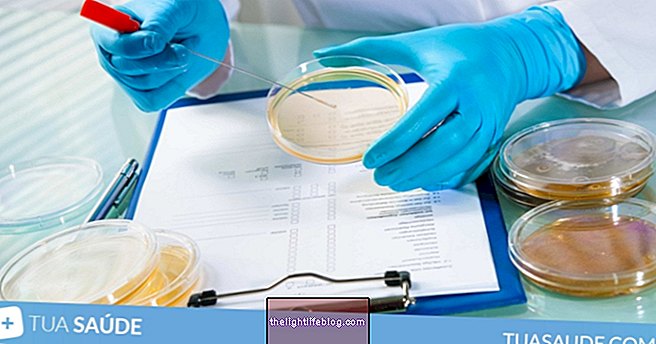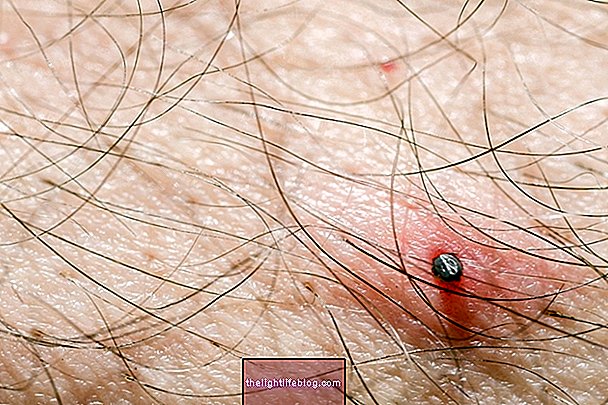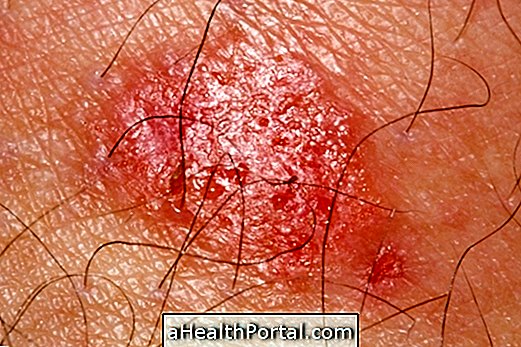Candida auris is a type of fungus that has been gaining prominence in health due to the fact that it is multidrug-resistant, that is, it is resistant to several antifungals, which makes it difficult to fight infection, in addition to having difficulty in identification, since it can be confused with other yeasts . Thus, as it presents multidrug resistance, Candida auris is popularly known as superfungo.
THE Candida auris it was first isolated in 2009 from a sample of secretion in the ear of a Japanese patient and in 2016 it was determined that the occurrence of this fungus was mandatory to report, since the treatment and control of this infection is difficult. More recently, in 2020, the first case of Candida auris in Brazil, indicating that greater measures are needed to identify, prevent and control infection by this fungus.

Symptoms of Candida auris
Infection with Candida auris it is more common in people who stay in the hospital for long periods and have a compromised immune system, which favors the presence of the fungus in the bloodstream, leading to the appearance of some symptoms, such as:
- High fever;
- Dizziness;
- Fatigue;
- Increased heart rate;
- Vomiting.
This fungus was first identified in the ear, however it can also be related to urinary and respiratory system infections, and can be confused with other microorganisms. Despite this, it is still not very clear whether the focus of infection by Candida auris it may actually be the lung or the urinary system, or if the fungus arises in these systems as a result of infection elsewhere in the body.
How the diagnosis is made
The diagnosis of infection by Candida auris it is difficult, since the available identification methods are not very specific for the identification of this species, and it is important to carry out more specific tests, such as MALDI-TOF, to confirm the species, or differential tests to discard other yeasts, when the laboratory has not owns the MALDI-TOF equipment.
In addition, this fungus can be isolated from various biological materials, such as blood, wound secretion, respiratory secretions and urine, for example, and, therefore, it is important that the laboratory performs more specific tests when it is identified in the sample. presence of yeast belonging to the genus Candida.
It is also important that as the identification test is carried out, an antifungigram is also carried out, which is a test that aims to identify which antimicrobials the fungus tested is sensitive or resistant to, and thus, it is possible to know which treatment is the most suitable for infection.

Who is most at risk of infection?
The risk of infection by Candida auris it is greater when the person remains hospitalized for a long period in the hospital, has previously used antifungals, has a central venous catheter or other medical devices in the body, since this fungus has the ability to adhere to medical equipment, making treatment difficult and favoring its proliferation.
The prolonged or indiscriminate use of antibiotics can also favor infection by this superfungo, since excess antibiotics can eliminate bacteria capable of fighting the entry of Candida auris in the body, preventing infection. Thus, the more antibiotics used, the greater the risk of infection with this superfungo, especially when the person is in a hospital environment.
In addition, people who have recently undergone surgical procedures, have chronic illnesses, such as diabetes, for example, and find themselves with a weakened immune system have a higher risk of infection by Candida auris.
Another factor that favors infection by Candida auris is the high temperature, because this fungus has developed mechanisms of resistance to high temperatures, managing to survive and proliferate in the environment and in the human body more easily.
Treatment for Candida auris
Treatment for Candida auris it is difficult, since this fungus has demonstrated resistance to the antifungals normally used in the treatment of infections by Candida, therefore, it is also called superfungo. Thus, the treatment is defined by the doctor according to the severity of the infection and the patient's immune system, and the use of echinocandin class antifungals or the combination of several high doses of antifungals may be indicated.
It is important that infection by Candida auris is identified and treated as soon as possible to prevent this fungus from spreading into the bloodstream and giving rise to widespread infection, which is often fatal.
How to prevent
Prevention of infection by Candida auris it must be done in order to avoid contamination by this microorganism, which can happen mainly in hospitals through prolonged contact with surfaces containing the fungus or medical devices, mainly catheters.
Thus, as a way to prevent the spread and transmission of this fungus, it is important to pay attention to hand washing before and after contact with the patient, as well as attention to the disinfection of hospital surfaces and medical devices.
In addition, it is important that the person who is diagnosed with Candida auris infection, remains in isolation, as this way it is possible to prevent infection from other people present in the health environment and who have the weakest immune system.
For this reason, it is important that the hospital has an efficient infection control system and encourages infection prevention measures, both related to the patient and the team and to hospital visitors, as well as protocols for the identification and laboratory monitoring of infections. by Candida sp. that are resistant to antimicrobials. Learn how to prevent nosocomial infections.
Was this information helpful?
Yes No
Your opinion is important! Write here how we can improve our text:
Any questions? Click here to be answered.
Email in which you want to receive a reply:
Check the confirmation email we sent you.
Your name:
Reason for visit:
--- Choose your reason --- DiseaseLive betterHelp another personGain knowledge
Are you a health professional?
NoMedicalPharmaceuticalsNurseNutritionistBiomedicalPhysiotherapistBeauticianOther
Bibliography
- CDC. Candida auris. Available in: . Accessed on Dec 16, 2020
- CDC. General Information about Candida auris. Available in: . Accessed on Dec 16, 2020
- SPIVAK, Emily S .; HANSONA, Kimberly E. Candida auris: an Emerging Fungal Pathogen. Journal of Clinical Microbiology. Vol 56. 2nd ed; 1-10, 2018
- SARDI, Janaina de C. O .; SILVA, Diego R .; GIANNINI, Maria J. S. M .; ROSALEN, Pedro L. Candida auris: Epidemiology, risk factors, virulence, resistance, and therapeutic options. Microbial Pathogenesis. 2018
- CDC. Infection Prevention and Control for Candida auris. Available in: . Accessed on Dec 16, 2020
- ANVISA. Risk Alert GVIMS / GGTES / Anvisa no 01/2020 . 2020. Available at:. Accessed on Dec 16, 2020
- ANVISA. Reports of Candida auris outbreaks in health services in Latin America. . 2017. Available at:. Accessed on Dec 16, 2020





















.jpg)


